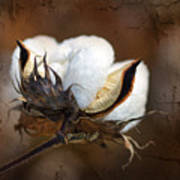RESEARCH REPORTS
Jiang Jiale, Li Rongwang, Ma Xuehua, Li Minghua, Liu Yang, Lu Yang, Ma Fuyu
[Objective] A model for estimating the quantity of seedlings in drip-irrigated cotton using color characteristics and morphological characteristics of unmanned aerial vehicle (UAV) image data was constructed to provide a theoretical basis for accurate management in cotton field. [Methods] The experiment was carried out in 2020-2021 and the cultivar Lumianyan 24 was used in the experiment. Three different planting densities were set as follow: low density (D1, 6.9 × 104 plant·hm-2), medium density (D2, 13.8 × 104 plant·hm-2) and high density (D3, 24 × 104 plant·hm-2). The UAV images were obtained on the 25 days old cotton seedlings, and the vegetation indices (VIs) of red, green, and blue (RGB) and target morphological features were extracted from the acquired UAV images. Based on the selected independent variable according to the correlation analysis, the model to estimate the quantity of cotton seedlings was constructed using stepwise multiple regression, followed by the model validation. [Results] (1) Comparing the segmentation effects of extracting cotton targets by triangular greenness index (TGI), excess greenness index (ExG), and green-blue difference + modified excess greenness index (GBDI + MExG), all these three VIs had relatively good segmentation effects, while TGI showed the highest precision of segmentation of cotton targets. (2) Comparing the two cotton plant quantity estimation models constructed with the two feature parameters, the estimation model based on the target morphological features for cotton seedling (R2=0.935 5) is better than the estimation model based on the VI of RGB (R2=0.903 6). (3) The estimation accuracy of the VIs-based seedling quantity estimation model were 96.77%, 99.55%, and 95.95% at D1, D2 and D3 densities respectively, and the overall estimation accuracy was 98.47%; the estimation accuracy of the plant estimation model based on the target morphological features at D1, D2 and D3 densities were 99.98%, 99.21%, and 97.92% respectively, and the overall estimation accuracy was 99.21%. The accuracy of the plant number estimation model based on the target morphological characteristics was slightly higher than that of the plant number estimation model based on VIs, but both models had good estimation outcome under different planting densities. [Conclusion] Using the UAV based low-altitude remote sensing platform with the integration of high-resolution sensors, the quantity estimation models for the drip-irrigated cotton seedlings were constructed by color vegetation indices and morphological features of target plants. Both models can effectively and accurately identify and quantify the drip-irrigated cotton plants under mulching, providing technical support for subsequent precision management in cotton fields.
